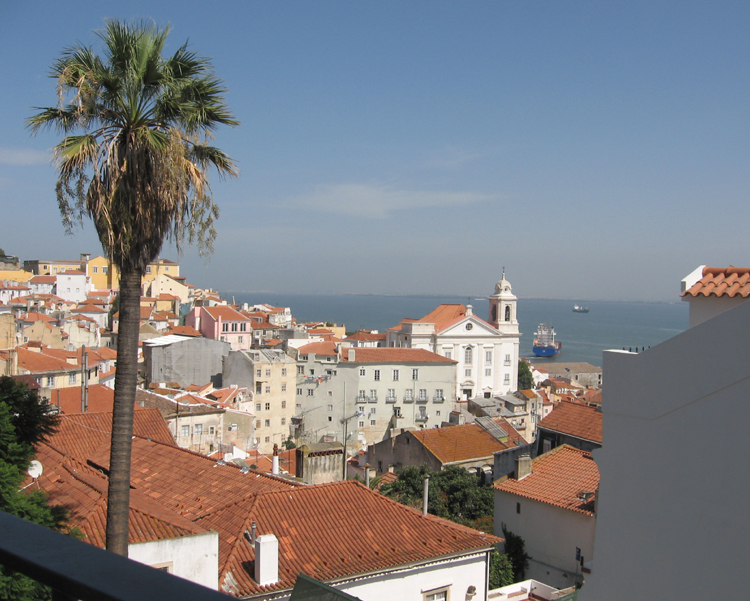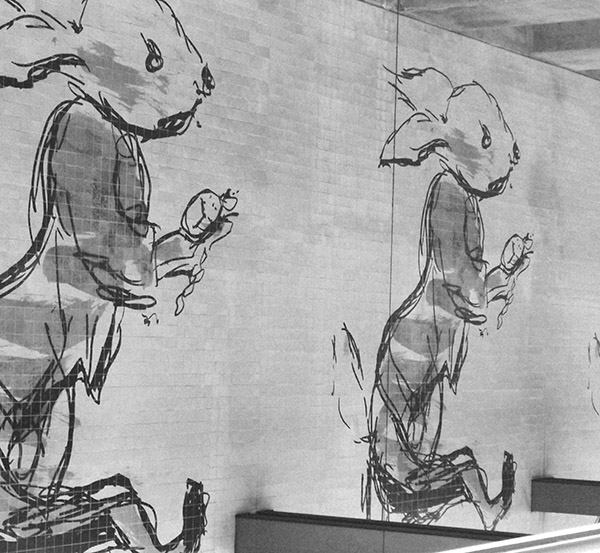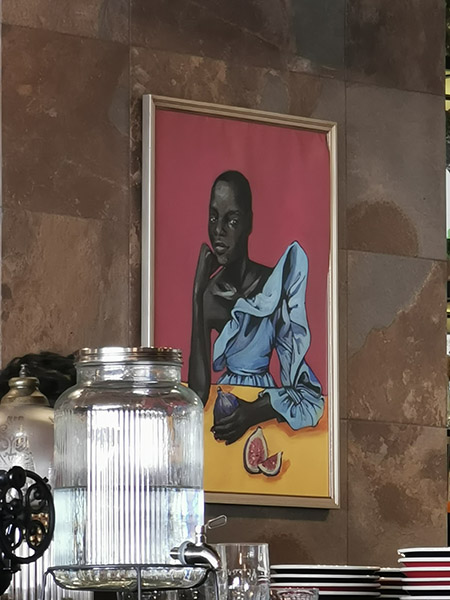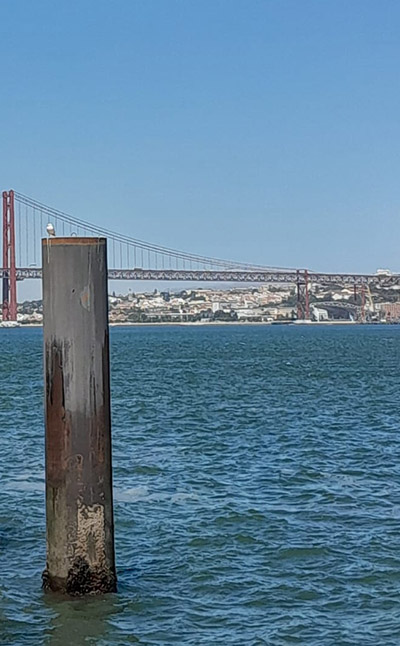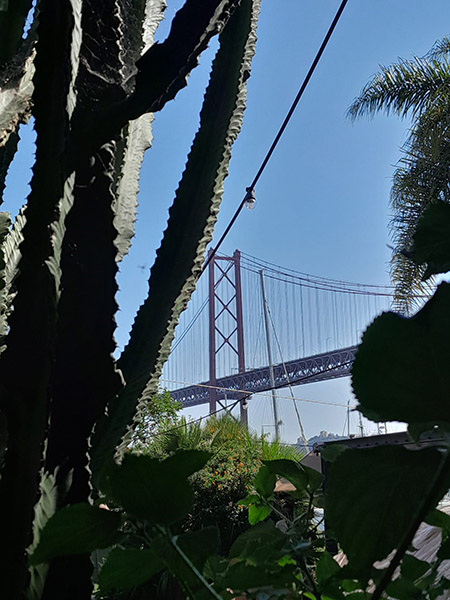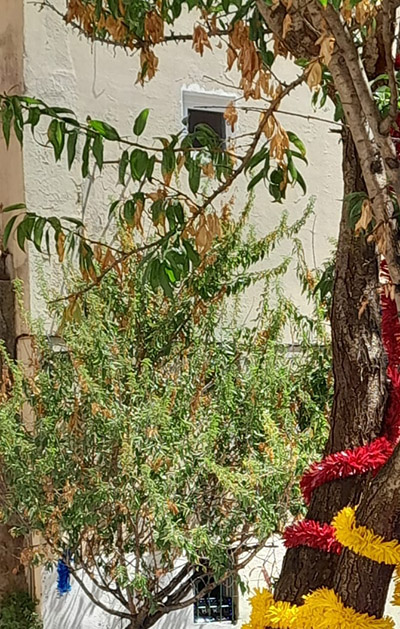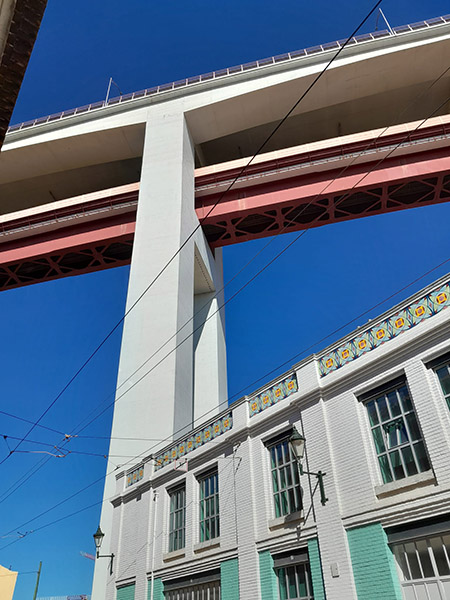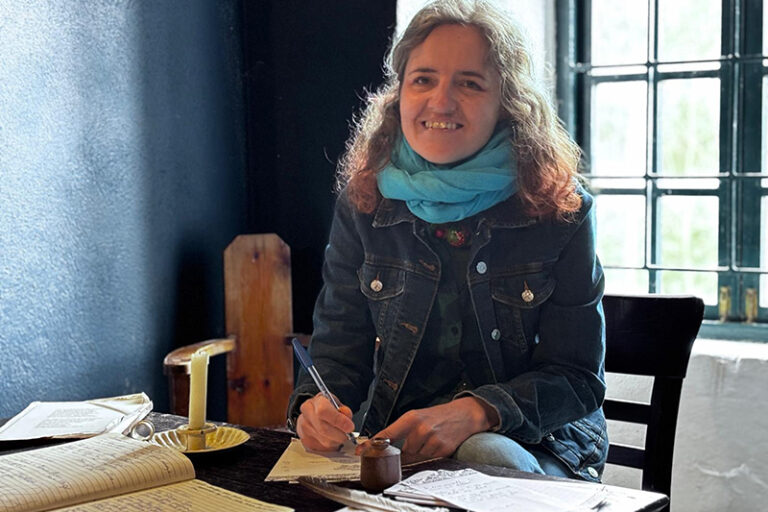This post is also available in:
 polski (Polish)
polski (Polish)
We are sitting again on the celadon green chairs on the cobblestone sidewalk. Sunlight filters through the window of the local café, Despensa N.6. For breakfast, gluten-free pancakes with peaches or buckwheat bread with Flamengo cheese. Everything is Lisbon.
The plane flies into the heart of the beige city. Ginger roof tiles gleam on the Tagus River bacground The Red Bridge 25 de Abril carries millions of carnations. It could be a scene from a movie. But this isn’t a made-up story. Fernando Pessoa is waiting for us right at the subway entrance. Butterflies flutter in my stomach, and my love for Lisbon grows stronger because my niece is with me.
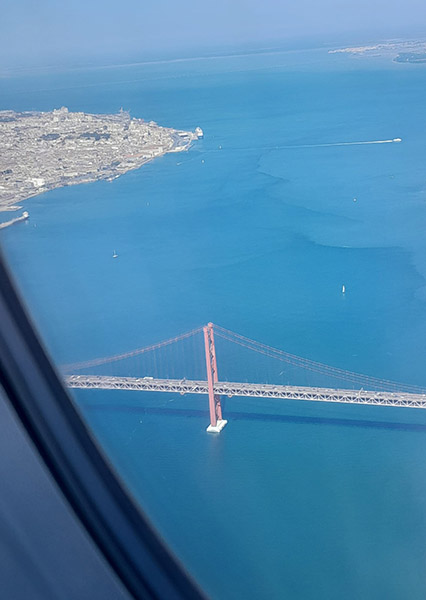
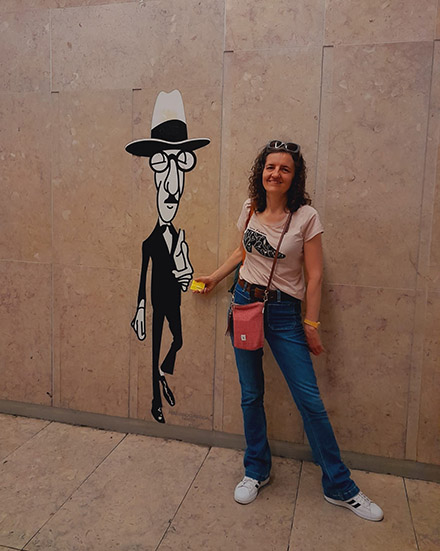
Metropolitano de Lisboa
From the very beginning, the metro is becoming our everyday reality and a stunning art gallery by famous Portuguese artists. Proud black figures on the tiles depict Lisbon’s female merchants with jugs on their heads at Picoas station.
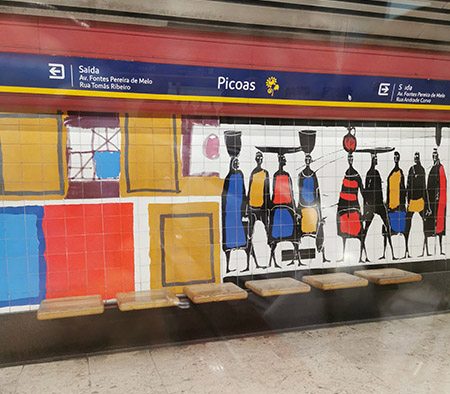
A tangerine sphere and tiles like the depths of the sea at the Oriente stop.
Marquez de Pombal, with plans for the city’s reconstruction in hand, he seems carved from wood between the platforms at his green-and-blue station.
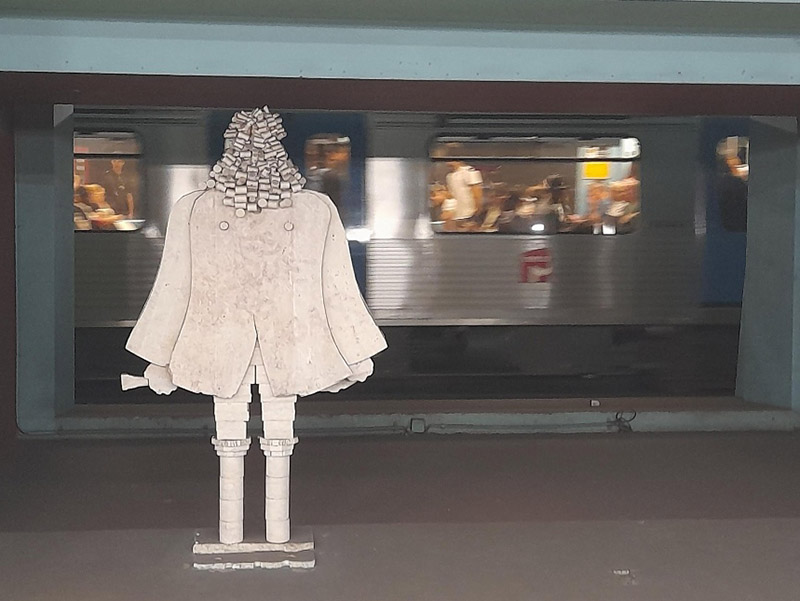
Lisbon’s Women in various shades of marble, limestone, and graphite adorned with agate at our Campo Pequeno station. Or giant rabbits at Cais do Sodré.
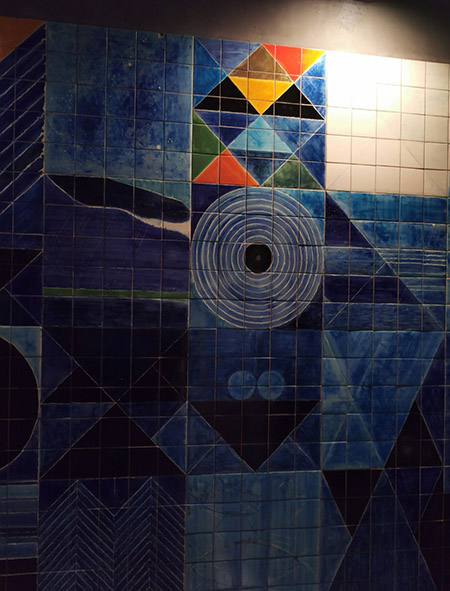
We travel on red chairs in the azure interior of the carriages. Various Lisboners surround us, and we feel that we are now part of the City of the Seven Hills, too.
The elevator de Santa Justa has a stately neo-Gothic figure carved in iron. Its wooden interior evokes a royal salon that lifts us from Baxia to Chiado. On the terrace, Lisbon illuminates us with its extraordinary panorama.
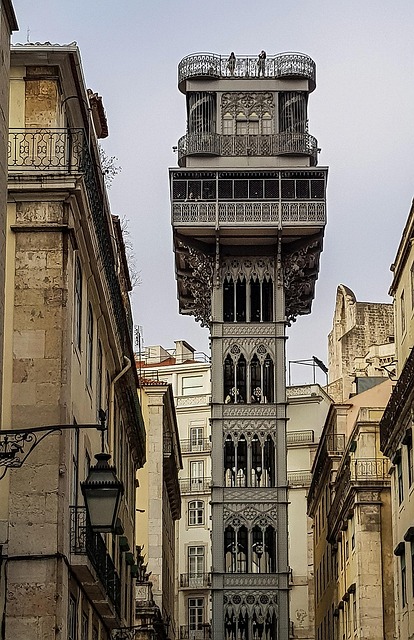
And when we go down on the stairs, the historic walls mix with modern fashion designer windows and the space of the sunny Praça de Comercio.
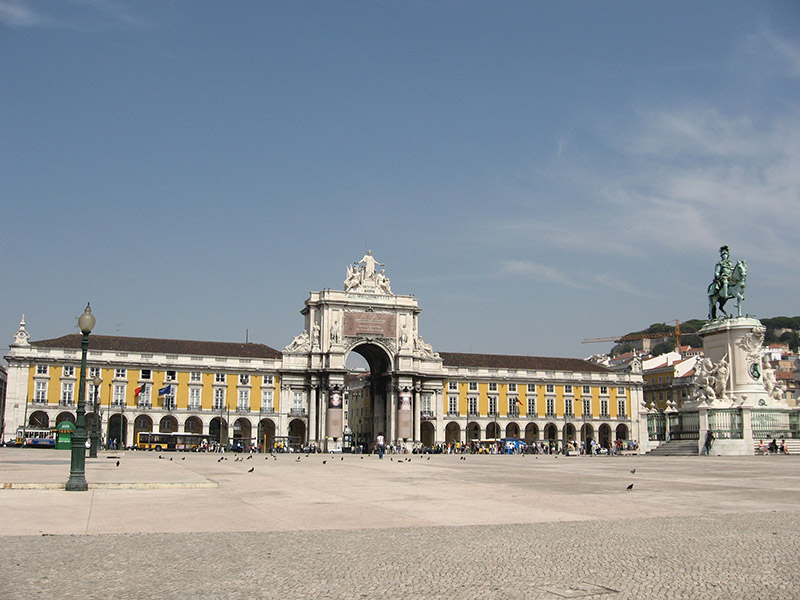
The tram driver slams on the brakes as the yellow tram swerves slightly off the street as we board. Then it clangs as it climbs between the buildings.
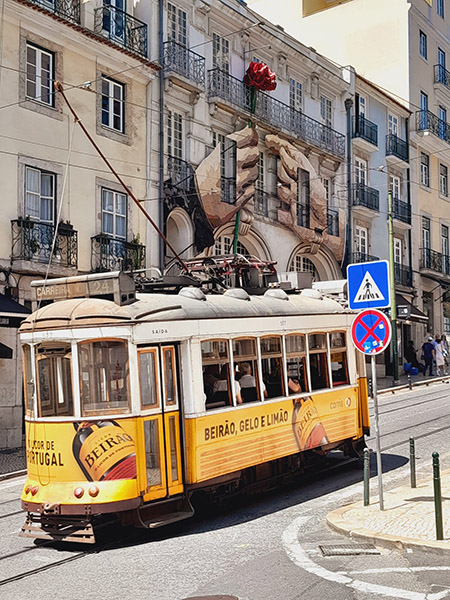
Other times, it takes us straight to Alcântara, stopping just below the red bridge, under which towering tenement houses adorned with azulejos. And still other times, it glistens with cacti or simply with blue. We have the opportunity to admire this bridge from almost every side.
LX Factory – a former textile factory in Alcântara. It has been transformed into an art space. We discovered some interesting murals there. But what we loved most is the four differentlevels bookstore – Livraria Ler Devagar, translated as the Read Slowly Bookstore, whose has been named one of the 20 most beautiful in the world.
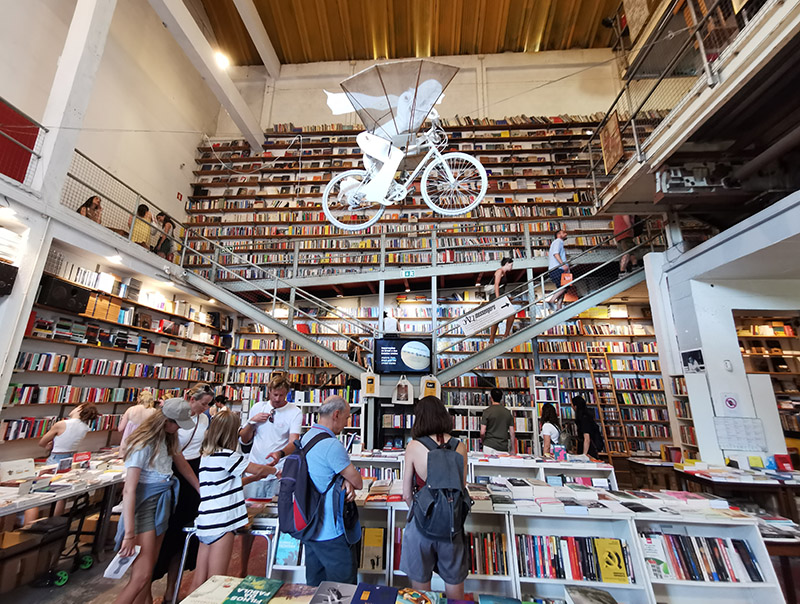
The next day, we set off for the Atlantic. We ask for ferry tickets to Montijo. Meanwhile, the guy at the box office looks a bit surprised and recommends us Costa da Caparica, a beach even more beautiful than we’d dreamed.
From Cacilhas, the view of Lisbon is, as always, the most stunning. We eat grapes bought at the port. Then, in Portuguese, we ask an elderly man for a bus that will take us to the ocean, which is only 45 minutes from Lisbon.
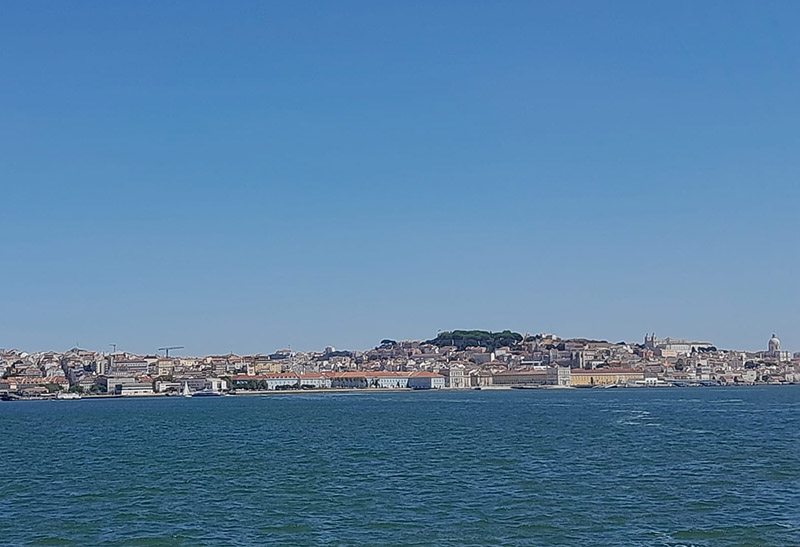
And suddenly we realize why surfers love Portugal so much. Because on the coastline of Costa de Caparica, waves rise 5 meters and plunge us into the turquoise waters.
Avenida da República is already in our neighborhood, cery close to Campo Pequeno. We go there around. It’s supposedly a great part of the city if you want to live in Lisbon.
Bats fly over the amphitheater in the Fundação Colouste Gubelbenkian garden as experimental jazz by The Selva trio plays. The music is enhanced by the sound of airplanes flying overhead and the rustle of giant trees. Jazz em Agosto takes place in Lisbon every year. And we’re lucky enough to be a part of it.

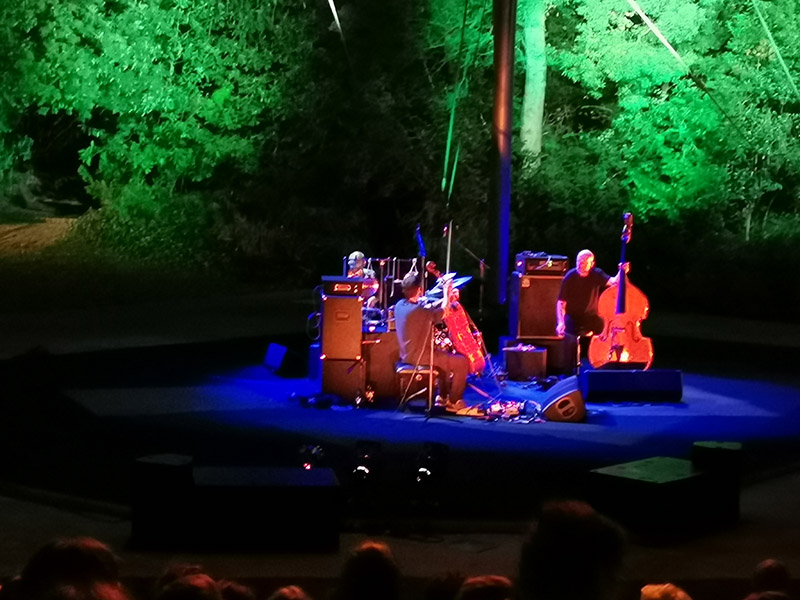
On the way back, we see on the wall big images of women with masked faces, reading some message. And nearby, carnations rise. The red carnation symbolizes the greatest peaceful revolution, which took place in Lisbon on April 25, 1974, and overthrew 50 years of dictatorship.
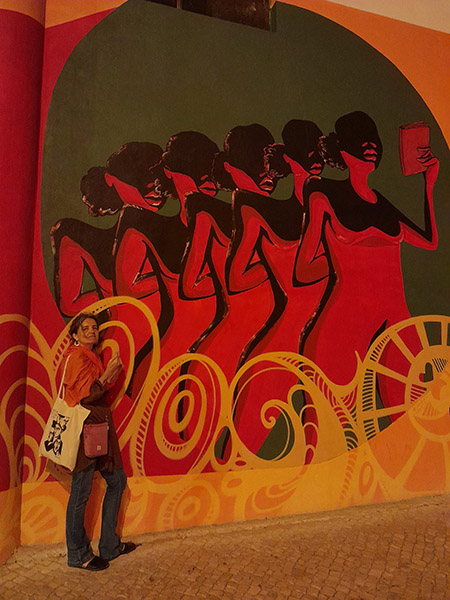
Celeste Caeiro, a restaurant worker, gave accidentaly a red carnation to a soldier who spontaneously placed it in the barrel of his rifle. Other soldiers followed his example, and then many lisbon’s florists began distributing carnations to all participants in the revolution.
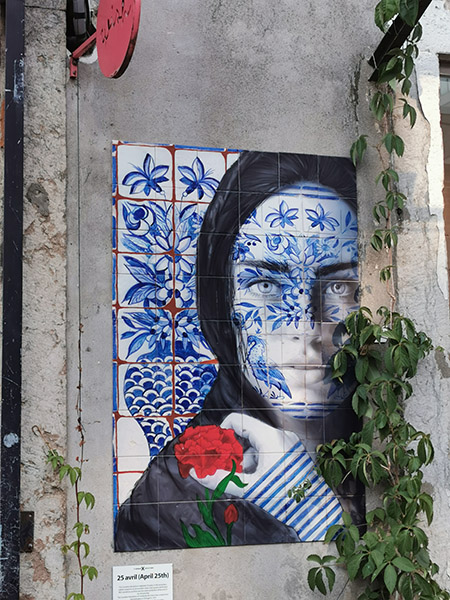
What Ever Art is our B and B in an old tenement house. When we open the oak door, the hotel’s hall is illuminated by artistic installations created by Carlos, the owner. On the balcony in the small garden, we film a video our daily outfit routine. Sometimes the black cat comes to visit us.
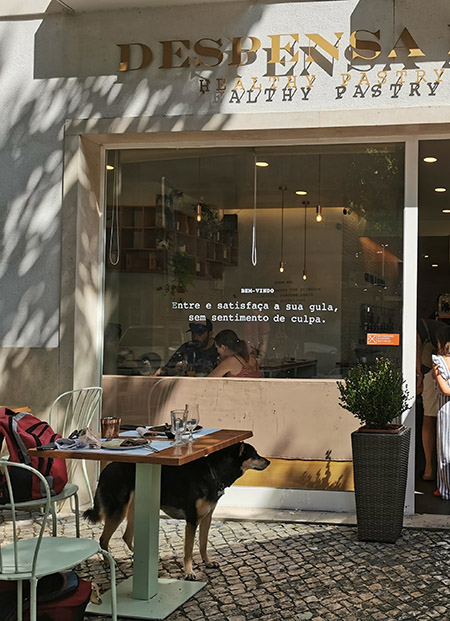
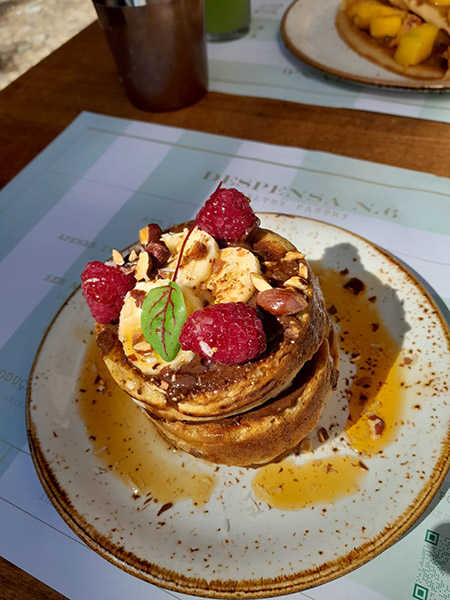
Oh, Lisbon, when I close my eyes, we’re flying again in the ropeway over the Parce de Naçoes. And you’re drawing the white Vasco da Gama Bridge on the bright blue.
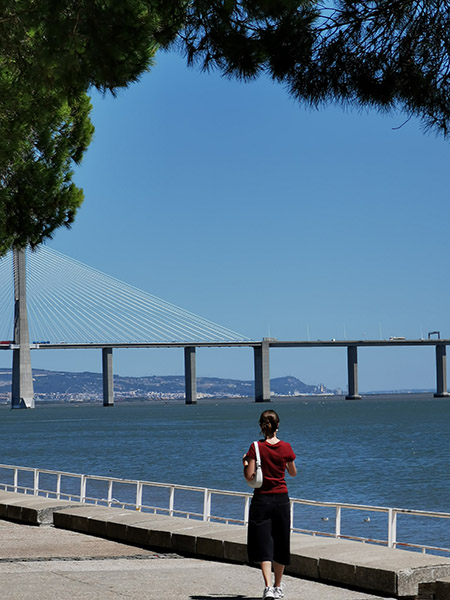
A chocolate cake right by the Tagus River tastes heavenly. Stars and colorful lights twinkle above the streets until dawn. Garlands adorn the trees in Alfama, left over from the festival of Saint Anthony, Lisbon’s patron, who was born in Alfama.
And before we even reach the airport, we get off at the São Sebastião station and wander through another interesting enclave among the tenement houses to find Rice Me Deli, a gluten-free bakery and pastry shop, where we munch on delicious Pastéis de Nata.
(…)
In the neighborhoods of this enchanted city,
Everything serves as joy,
And longing becomes joyful,
At the sound of daylight, at the sound of the Holly Mary,
Lisbon walks with her sea-colored skirt,
Each neighborhood is a groom who will marry her,
Lisbon walks with her bow and balloon,
With songs on her lips and love in her heart,
(…)
Amalia Rodrigues’ “Lá Vai Lisboa”

